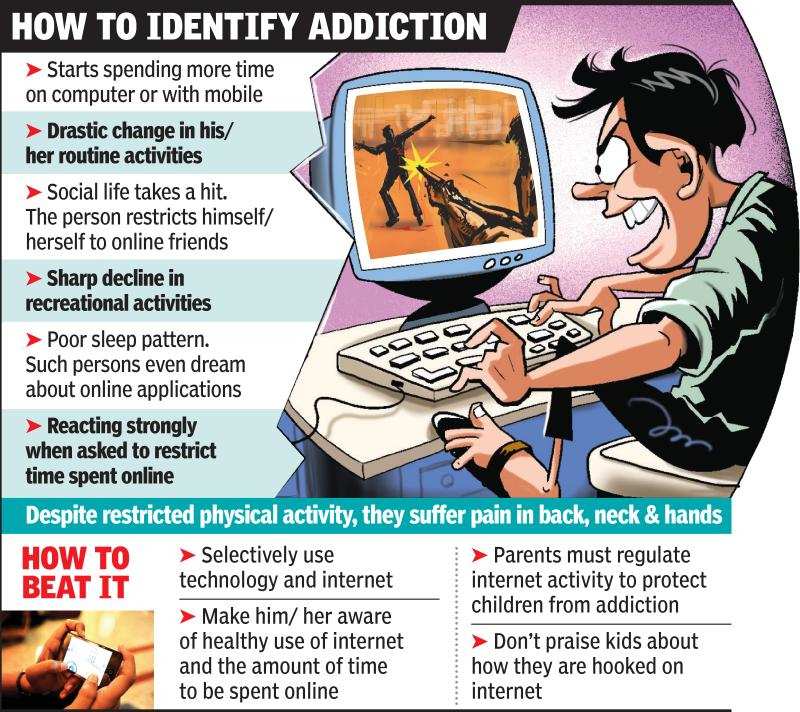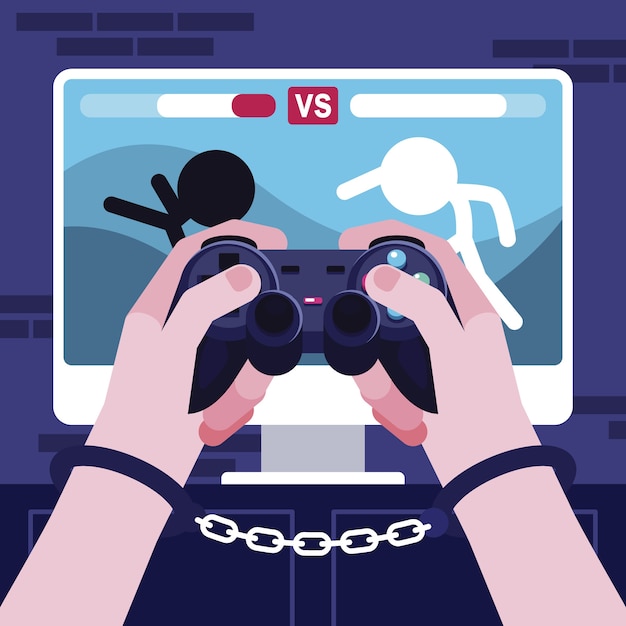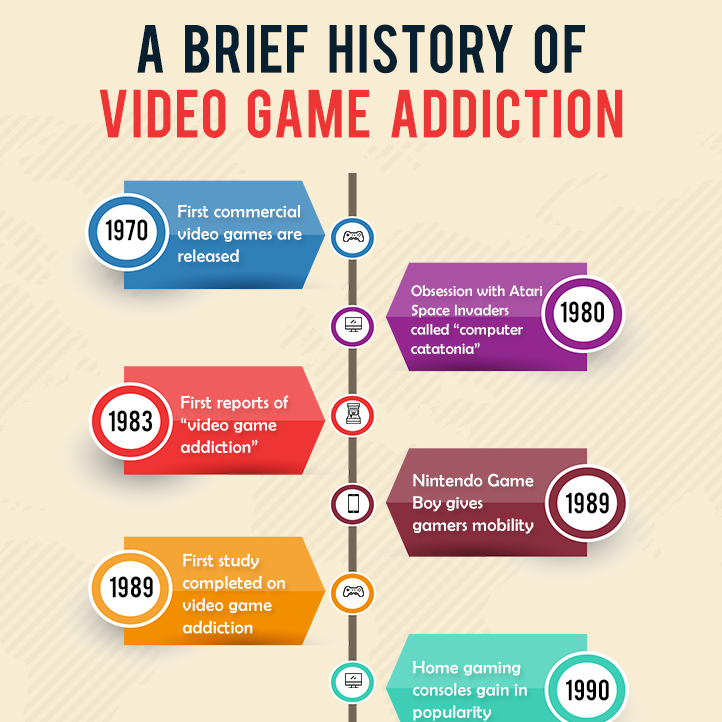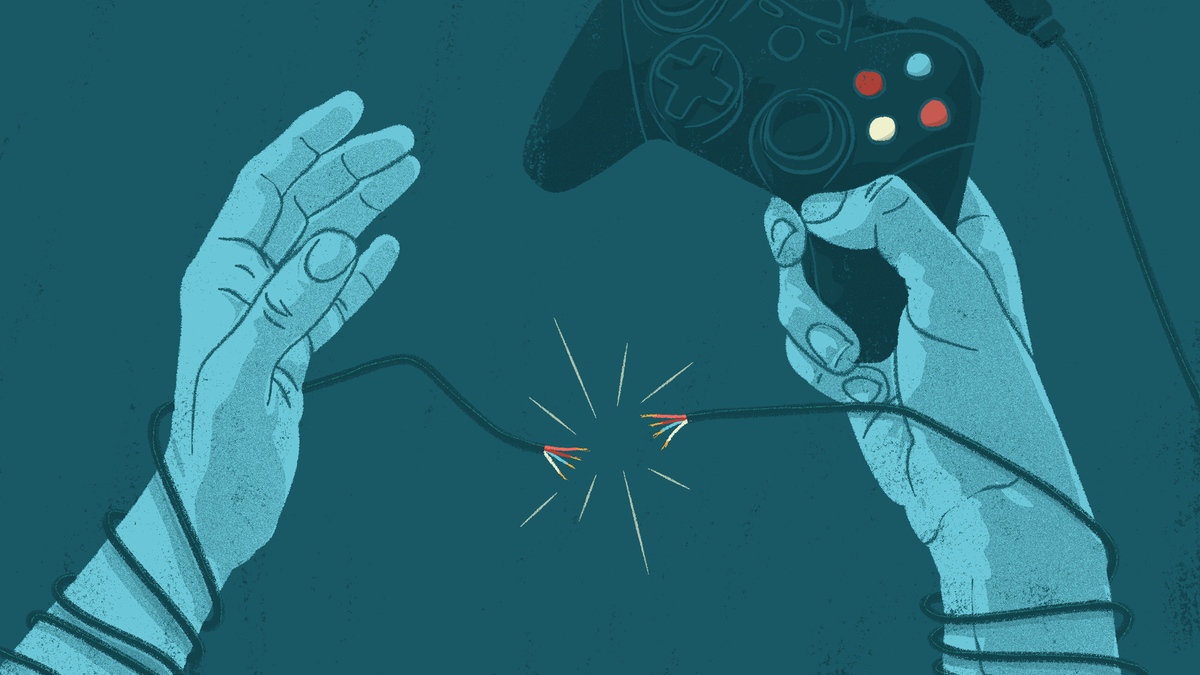The Allure of Free: Examining the Addiction Potential of Free-to-Play Games in 2025
Related Articles: The Allure of Free: Examining the Addiction Potential of Free-to-Play Games in 2025
Introduction
In this auspicious occasion, we are delighted to delve into the intriguing topic related to The Allure of Free: Examining the Addiction Potential of Free-to-Play Games in 2025. Let’s weave interesting information and offer fresh perspectives to the readers.
Table of Content
The Allure of Free: Examining the Addiction Potential of Free-to-Play Games in 2025

The year is 2025. The gaming landscape has shifted dramatically. Free-to-play games, once viewed as a niche market, have become the dominant force, attracting billions of players worldwide. This shift, however, has brought with it a new set of challenges: the potential for addiction. While free-to-play games offer accessibility and entertainment, their design often incorporates mechanics that can lead to excessive gameplay and detrimental consequences.
Understanding the Mechanics of Addiction
The addictive nature of free-to-play games stems from a complex interplay of psychological and design principles. These games are designed to exploit inherent human desires for reward, progress, and social interaction, often employing techniques that can be difficult to resist.
1. Reward Systems and Variable Reinforcement:
- The Dopamine Loop: Free-to-play games frequently utilize variable reinforcement schedules. This means that players are rewarded at unpredictable intervals, creating a sense of anticipation and excitement. This triggers the release of dopamine, a neurotransmitter associated with pleasure and motivation, reinforcing the desire to continue playing.
- The "Near Miss" Effect: Games often engineer "near misses," where players narrowly miss achieving a goal or reward. This creates a sense of frustration that motivates players to keep trying, hoping for success.
- The "Loot Box" Phenomenon: Loot boxes, random reward systems often found in free-to-play games, tap into the allure of gambling. The uncertainty of what rewards await fuels anticipation and encourages players to spend money in pursuit of rare or desirable items.
2. Progression and Achievement:
- The "Grinding" Cycle: Free-to-play games often require extensive "grinding," or repetitive gameplay, to progress. This creates a sense of accomplishment and motivates players to continue playing, even if the gameplay becomes tedious.
- The "FOMO" Factor: The fear of missing out (FOMO) is a powerful motivator. Free-to-play games often introduce limited-time events or exclusive rewards, driving players to engage constantly to avoid missing out on valuable content.
- Social Comparison: Many free-to-play games incorporate social features, allowing players to compare their progress and achievements with others. This can foster competitive urges and encourage players to spend more time and money to stay ahead.
3. Monetization Strategies:
- The "Pay-to-Win" Model: Some free-to-play games utilize a "pay-to-win" model, where players who spend money gain a significant advantage over those who do not. This can create an uneven playing field, leading players to feel pressured to spend money to remain competitive.
- Microtransactions: Free-to-play games often offer a wide array of microtransactions, small purchases that can accumulate over time. The convenience and seemingly low cost of these purchases can lead players to spend more than they intended.
- "Whale" Targeting: Game developers often target "whales," players willing to spend significant amounts of money on in-game items. This can lead to a vicious cycle of spending, as players try to keep up with the top spenders.
The Impact of Addiction
The addictive nature of free-to-play games can have serious consequences for individuals and society.
- Financial Strain: Excessive spending on microtransactions can lead to financial hardship, particularly for vulnerable populations like youth and those with gambling problems.
- Social Isolation: Excessive gaming can lead to social isolation and neglect of real-life relationships.
- Physical Health Issues: Prolonged gaming sessions can contribute to eye strain, sleep deprivation, and physical inactivity.
- Mental Health Issues: Addiction to free-to-play games can lead to anxiety, depression, and other mental health problems.
Addressing the Issue
Recognizing the potential for addiction is crucial for developers, players, and society as a whole.
- Developer Responsibility: Game developers have a responsibility to design games that are engaging and entertaining without being exploitative. This involves implementing responsible monetization strategies, promoting healthy gameplay habits, and providing resources for players who may be struggling with addiction.
- Player Awareness: Players need to be aware of the potential for addiction and develop healthy gaming habits. This includes setting limits on playtime, avoiding "pay-to-win" games, and seeking help if needed.
- Parental Guidance: Parents play a crucial role in protecting children from the dangers of gaming addiction. They need to monitor their children’s gaming habits, set limits on playtime, and talk to them about responsible gaming practices.
- Public Policy: Governments and regulatory bodies can play a role in addressing the issue of gaming addiction by implementing policies that promote responsible gaming practices and protect vulnerable populations.
FAQs
Q: Are all free-to-play games addictive?
A: No, not all free-to-play games are addictive. However, many games employ design principles that can increase the likelihood of addiction.
Q: How can I tell if I am addicted to a free-to-play game?
A: Signs of addiction include neglecting responsibilities, spending excessive amounts of time and money on the game, experiencing withdrawal symptoms when not playing, and experiencing negative consequences in your life as a result of your gaming habits.
Q: What can I do if I am addicted to a free-to-play game?
A: If you are struggling with gaming addiction, seeking professional help is crucial. Therapists and support groups can provide guidance and resources to overcome the addiction.
Tips for Responsible Gaming:
- Set time limits: Decide how much time you can dedicate to gaming each day and stick to it.
- Avoid "pay-to-win" games: Choose games that offer a balanced experience without requiring excessive spending.
- Take breaks: Step away from the game regularly to avoid burnout and maintain a healthy balance.
- Engage in other activities: Make time for hobbies, social interactions, and physical activity outside of gaming.
- Seek support: Talk to friends, family, or a therapist if you are struggling with gaming addiction.
Conclusion
Free-to-play games have revolutionized the gaming industry, offering accessibility and entertainment to a wider audience. However, the allure of these games can be seductive, and their design often incorporates mechanics that exploit human psychology, leading to potential addiction. Recognizing the potential risks and implementing strategies for responsible gaming is crucial for protecting individuals and society from the negative consequences of excessive gaming. By fostering awareness, promoting responsible design practices, and providing support for those struggling with addiction, we can ensure that the benefits of free-to-play games are enjoyed responsibly and without compromising well-being.








Closure
Thus, we hope this article has provided valuable insights into The Allure of Free: Examining the Addiction Potential of Free-to-Play Games in 2025. We appreciate your attention to our article. See you in our next article!